DevOps Team roles and responsibilities focus on bridging the gap between development and operations to create a collaborative, agile, and efficient environment.
Teams typically comprise developers, testers, automation experts, quality assurance, security professionals, and release managers, each contributing to streamlining the CI/CD pipeline, automating repetitive tasks, and ensuring robust infrastructure management through practices like Infrastructure as Code (IaC).
By 2026, many organizations have also integrated Site Reliability Engineers (SREs) and Platform Engineers into their DevOps teams to enhance system reliability and developer productivity further
Leadership, often in the form of a DevOps evangelist, is essential for driving cultural change, breaking down silos, and ensuring that security and compliance are integrated from the outset.
By 2026, DevOps teams also leverage AI-driven operations (AIOps) and enhanced observability practices to enable faster feedback loops and proactive issue resolution
- How is a DevOps Team Structured?
- What are the key responsibilities of a DevOps team?
- What are the Roles in a DevOps Team?
- How to improve DevOps team efficiency?
- Best Practices to Succeed as a DevOps Team
- FAQs
How is a DevOps Team Structured?
A DevOps team is structured as a cross-functional unit that brings together members from development, IT operations, quality assurance, and security. Rather than silos, all these roles work in unison on a shared goal: fast, continuous delivery of software.
Each role has a clear place: for example, developers and testers build and validate code, while ops engineers and SREs manage deployment and reliability. A DevOps Evangelist or lead coordinates across the group to drive DevOps principles.
The exact team composition can vary by organization size. Still, the core idea is to include all the skill sets needed to take an idea from code to production within a single collaborative team.
- Senior DevOps: As the team’s core responsibility falls to the person who owns the DevOps team, a senior person from the organization would be an ideal candidate to lead the team.
- DevOps Evangelist: This will ensure that the responsibilities of DevOps processes are assigned to the right people.
- Software developer/tester: Builds and tests code throughout the application lifecycle.
- Automation engineer/automation expert: Focuses on automating manual, repetitive tasks like deployments, tests, and infrastructure.
- Quality assurance professional: This person ensures that the software meets quality standards before deployment. They design test plans, run automated and manual tests, and validate CI/CD output.
- Security Engineer: Embeds security into every development phase by implementing DevSecOps practices, scanning code for vulnerabilities, managing secrets, and enforcing compliance policies.
- Release manager: Oversees the entire release lifecycle, from planning, scheduling, and building CI/CD pipelines to ensuring smooth deployment into production.
- Platform Engineer: This position focuses on building and maintaining internal developer platforms (IDPs) to streamline software delivery and reduce developers’ cognitive load.
- Site Reliability Engineer (SRE): Combines software and systems engineering to build and run large-scale, distributed, and fault-tolerant systems.
- AI/ML Ops Engineer: Specializes in integrating machine learning models into the CI/CD pipeline, ensuring seamless deployment and monitoring of AI applications.
- AIOps Engineer: Implements AI-driven solutions in IT operations, leveraging machine learning for proactive monitoring, anomaly detection, and automated incident response to improve system reliability and efficiency.
- Prompt Engineer: Focuses on designing and refining prompts for AI/ML models (especially large language models) to ensure accurate, relevant outputs
- DevSecOps Engineer: Integrates security practices into the DevOps process, emphasizing a “shift-left” approach to identify and address security issues early in the development lifecycle.
Read our blog on SRE vs DevOps
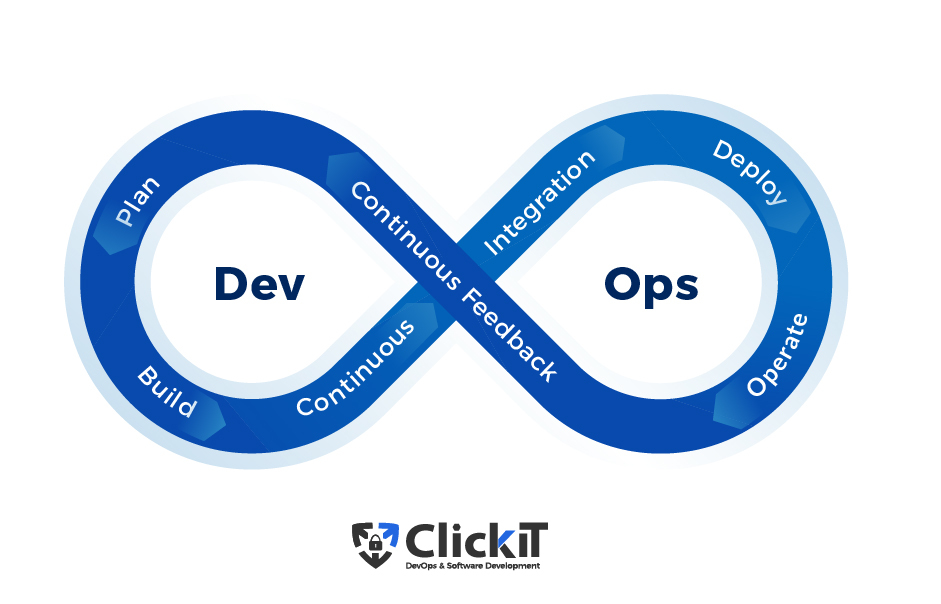
Leadership in the DevOps Team
DevOps teams are ideally led by a senior member of the organization who understands business processes, possesses the necessary technical expertise, and communicates effectively with all employees.
- The leader should articulate a clear vision across the team, drive intent, inspire, motivate, and encourage everyone.
- Seamless collaboration and engagement help everyone be motivated and align with organizational objectives.
- The leadership should recognize skilled individuals and train them to become leaders with personal support, coaching, etc.
- Decentralizing decision-making enables the team to share DevOps roles and responsibilities across the board while allowing them to expedite processes.
- The leader should ideally be a role model, show integrity, create a trustworthy environment, and inspire others to follow that path.
What are the key responsibilities of a DevOps team?
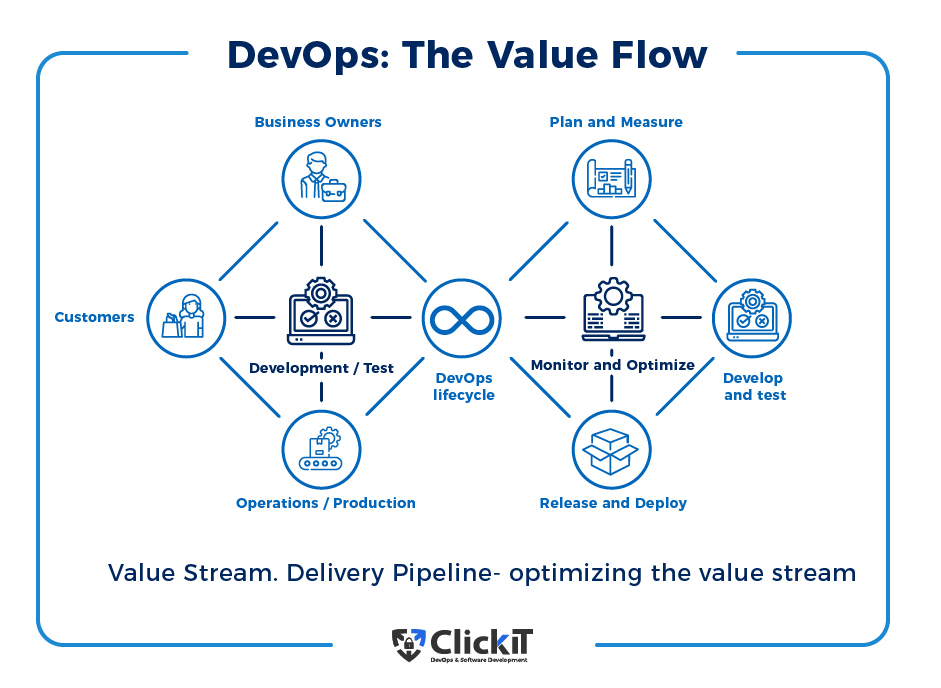
In a DevOps environment, cross-functional teams share common responsibilities. Here are some of the DevOps team’s responsibilities:
DevOps Responsibilities: CI/CD Pipelines
Continuous Integration and Continuous Deployment (CI/CD):
- Automates build, test, and deployment processes through integrated pipelines.
- Serverless CI/CD pipelines have become increasingly prevalent, enabling teams to deliver applications without managing the underlying infrastructure.
Build phase:
- The application is compiled using a version control system.
- Build is validated against organizational compliance requirements.
Test phase:
- Code undergoes both automated and manual testing to ensure its quality.
Release phase:
- Validated build is delivered to the repository.
Deployment phase:
- The application is deployed to the required platforms.
Serverless CI/CD platforms:
- GitHub Actions, AWS CodeCatalyst, and Harness are becoming standard.
- Enable teams to scale deployments without provisioning agents or runners manually.
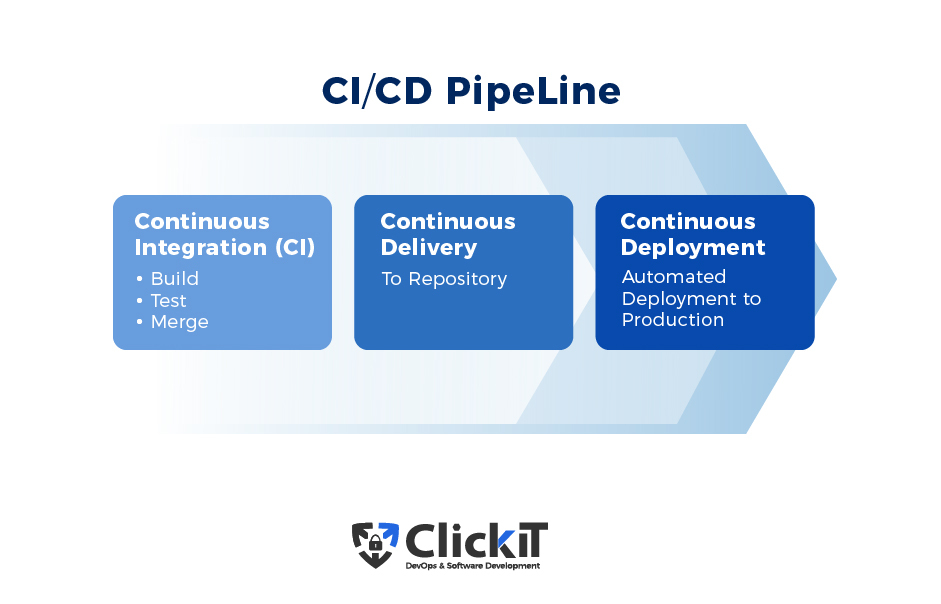
Continuous Delivery takes the applications and delivers them to selected infrastructures. Testing moves to the left part of the CI/CD pipeline, wherein code is automatically tested before being delivered to production. It improves collaboration and quality.
CI/CD has a huge impact on software development; that’s why we’ll see this trend in the Future of DevOps.
AI-Driven Automation & Observability
In 2026, AI-driven automation and observability will be key to modern DevOps.
AI/ML tools continuously monitor logs, metrics, and system traces to identify anomalies in real time, enabling early issue detection.
Predictive maintenance models forecast potential failures, allowing teams to address problems proactively.
Automated responses reduce incident resolution times, while dynamic resource scaling optimizes performance and cost efficiency. Together, these capabilities enhance overall system resilience and operational efficiency.
- Tools like Datadog, Dynatrace, and AWS CloudWatch utilize anomaly detection and root cause analysis via machine learning.
- ChatOps and incident bots automatically escalate issues and generate recovery playbooks.
- AI-driven predictive scaling replaces manual resource configuration in cloud environments.
DevOps Responsibilities: Cloud/Server/Network Architectures
Cloud technology in DevOps:
- Used to build scalable, flexible, and resilient applications.
- Supports modern architectures like microservices, serverless, and cloud-native platforms.
Traditional monolithic architectures:
- Stable but tightly coupled, limiting scalability and flexibility.
- Difficult to evolve or scale quickly.
Microservices approach:
- Breaks applications into smaller, independently deployable services.
- Enhances productivity, scalability, and reliability.
- Aligns perfectly with DevOps practices by enabling faster, isolated deployments.
Cloud architecture integration:
- Combines technologies such as, Automation
- Orchestration
- APIs
- Containerization
- Security
- Applies across deployment models: public, private, hybrid, and multi-cloud.
- Streamlines application management and accelerates innovation.
Cloud-native stacks:
- Commonly built around:
- Event buses (e.g., Amazon EventBridge)
- Orchestrators (e.g., AWS Step Functions)
- Sidecars / Service meshes (for granular control, observability, and networking).
Serverless architecture, also known as Function-as-a-Service (FaaS), allows you to run applications on third-party servers without managing underlying hardware. Unlike Platform-as-a-Service (PaaS), which hosts entire applications, serverless focus on deploying and scaling individual functions, with costs incurred only for the functions used. AWS Lambda is a common example of FaaS.
Read our blog about PaaS vs SaaS vs IaaS
In a DevOps team, a DevOps architect designs the infrastructure and sets guidelines, while a DevOps engineer implements and automates these processes using tools like Infrastructure as Code (IaC), with ongoing monitoring by the architect throughout the product lifecycle.
DevOps Responsibilities: Infrastructure as Code
Infrastructure as Code (IaC) is an innovative approach to managing infrastructure operations through code. Unlike traditional environments, where manual configuration files and scripts are used to manage configuration, IaC performs operations using code in an automated environment.
It treats infrastructure as code, applying version control systems, monitoring tools, and virtualization tests to automate and govern the operations as you do with code releases.
Capabilities:
- Describes and manages the desired state of machines or infrastructure.
- Goes beyond automation to enforce DevOps best practices, such as:
- Eliminating configuration errors.
- Testing infrastructure like application code.
- Streamlining operations and reducing manual overhead.
- Accelerating deployments.
- Enabling rapid rebuilds of entire environments during outages or disasters.
- Promotes seamless collaboration across teams since infrastructure changes are tracked and shared in code repositories.
Companion Practices:
- GitOps (e.g., ArgoCD, Flux): Uses Git as the single source of truth for infra and app deployments.
- Policy-as-Code (e.g., Open Policy Agent): Enforces compliance and security policies automatically in version-controlled workflows.
Why it matters in 2026:
- IaC has matured into the default way of managing infrastructure across enterprises.
- GitOps adoption is now mainstream, with CNCF surveys showing >60% of Kubernetes users applying GitOps workflows in production.
- Policy-as-code ensures that compliance (e.g., GDPR, SOC 2, HIPAA) is baked into infrastructure from day one.
I recommend this blog about Infrastructure as code, which discusses its benefits!
DevOps Responsibilities: Cloud migrations
- Describes and manages the desired state of machines or infrastructure.
- Goes beyond automation to enforce DevOps best practices, such as:
- Eliminating configuration errors.
- Testing infrastructure like application code.
- Streamlining operations and reducing manual overhead.
- Accelerating deployments.
- Enabling rapid rebuilds of entire environments during outages or disasters.
- Promotes seamless collaboration across teams, since infrastructure changes are tracked and shared in code repositories.
Companion Practices
- GitOps (e.g., ArgoCD, Flux): Uses Git as the single source of truth for infra and app deployments.
- Policy-as-Code (e.g., Open Policy Agent): Enforces compliance and security policies automatically in version-controlled workflows.
Why It Matters in 2026
- IaC has matured into the default way of managing infrastructure across enterprises.
- GitOps adoption is now mainstream , according to CNCF surveys, over 60% of Kubernetes users apply GitOps workflows in production.
- Policy-as-Code ensures compliance by default, embedding regulations like GDPR, SOC 2, and HIPAA into infrastructure from day one.
Discover how we provide AWS migration and implement IaC for a music company!
DevOps Responsibilities: Security Compliance
Security compliance is essential in every release cycle, requiring security to be integrated from the planning stage. DevSecOps automates security processes to keep pace with continuous delivery, ensuring that developers adhere to compliance standards.
- GitOps (e.g., ArgoCD, Flux): Uses Git as the single source of truth for infra and app deployments.
- Policy-as-Code (e.g., Open Policy Agent): Enforces compliance and security policies automatically in version-controlled workflows.
- IaC is now the default standard for managing infrastructure across enterprises.
- GitOps adoption is mainstream; according to CNCF surveys, over 60% of Kubernetes users apply GitOps workflows in production.
- Policy-as-Code enforces compliance by default, embedding regulations like GDPR, SOC 2, and HIPAA directly into infrastructure pipelines.
Discover ClickIT’s Cloud security services!
This is one of the top DevOps Trends teams should follow; read the full blog to learn more.

Practice and evangelize the DevOps culture across the IT department
When culture is deeply rooted in an organization, resistance to change is a significant bottleneck. As DevOps is not just a tool or a technology, it is essential to see a top-down cultural shift across the organization.
Teams should break down silos and find a common ground to communicate and collaborate seamlessly. It should happen from a business perspective, encompassing deployment and maintenance across all stakeholders, departments, and stages of development.
With various tools, technologies, processes, and personnel, achieving this is a Herculean task. It only happens when everyone adopts this change, practices it, and evangelizes the concept. DevOps leader holds a key role in this responsibility.
DevOps Responsibilities: Continuous Monitoring
Continuous monitoring in DevOps provides real-time feedback on the performance of an application in production. QA needs to match this pace to run automated tests as development gets faster in DevOps. QA being dependent on CI, continuous monitoring becomes an integral part of every stage of the product life cycle.
The current monitoring tools are not confined to production environments; they also proactively monitor the entire app stack. When monitoring is integrated into the DevOps lifecycle, tracking DevOps KPIs becomes easy, and app deployments become efficient. It also facilitates seamless collaboration between development and operations teams.
Read our blog DevOps Metrics and KPIs that CTOs Must Monitor to learn how to measure your DevOps team effectively and their work performance during project delivery
DevOps Responsibilities: IT Support
IT support is another critical team that should be integrated into the DevOps lifecycle. It should be automated to match the speed and scale of agile development. When developers push code to production, they can notify the support team of known errors.
Similarly, Kbs related to incidents and problems should be communicated to all members so that everyone is educated about issues and incidents.
Right from the service desk to operations and development, everyone should be responsible and linked with tickets raised so that they are updated with the happenings in the infrastructure. By linking tickets to corresponding releases or changes, you can minimize errors and accelerate app development.
DevOps Responsibilities: On call (Incident Management)
On-call Incident management is not very different in DevOps environments. The only change is that developers are also involved in this process. T
eams collaboratively identify vulnerabilities and are prepared to handle incidents efficiently. With monitoring tools, continuous feedback, and alerting tools, teams detect, respond, and resolve issues along with a post-mortem process.
While one on-call engineer responds to incidents, DevOps teams assign multiple people for escalations so that the on-call engineer can escalate it to the right person or team.
Once the issue is resolved, teams analyze the system again to prepare for future incidents.
Hire our LATAM DevOps engineers in your same time zone!
What are the Roles in a DevOps Team?
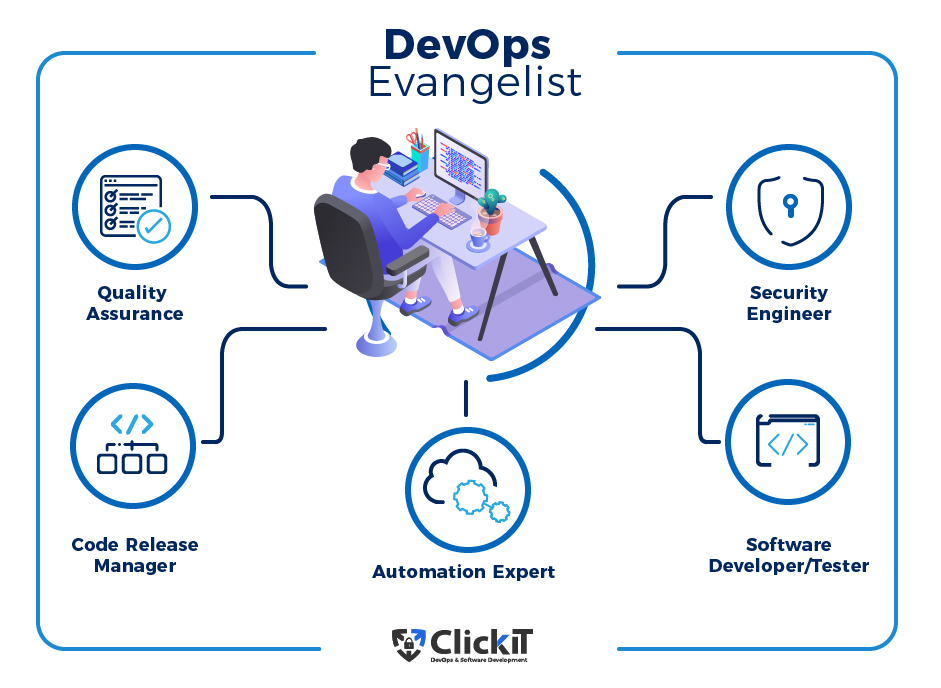
DevOps Roles: DevOps Engineer
A DevOps engineer is responsible for designing the right infrastructure required for teams to build and deliver products continuously. The engineer identifies project requirements and KPIs and customizes the tool stack.
He is well-versed in automation tools and security technologies. Right from the build, test, deployment, and monitoring of a product, the engineer integrates all resources and functions required at every stage of the product lifecycle while protecting the cloud architecture from hacking attacks.
In addition, the engineer is involved in team composition, project activities, and defining and setting the processes for CI/CD pipelines and external interfaces.
DevOps Roles: Release Manager
The Release Manager is a critical DevOps role responsible for the entire software release lifecycle. They plan release timelines, configure CI/CD pipelines for deployment, and coordinate with teams to ensure each software release is smooth and on schedule.
In a DevOps team, this role is demanding because it sits at the intersection of development and operations, ensuring rapid yet reliable releases.
DevOps Roles: DevOps/CloudOps architect
The responsibility of a DevOps architect is to analyze existing software development processes and create an optimized DevOps CI/CD pipeline to build and deliver software rapidly.
The architect analyses existing processes and implements best practices to streamline and automate processes using the right tools and technologies. Additionally, he monitors and manages technical operations, collaborates with development and operations teams, and provides support as needed. He also acts as a leader as required.
Watch this video to succeed in DevOps by adopting the Cloud Native architecture practice.
DevOps roles: Security and Compliance Engineer
The Security and Compliance Engineer (SCE) is responsible for the overall security of the DevOps environment.
The SCE closely collaborates with development teams to design and integrate security into the CI/CD pipeline, ensuring that data integrity and security are not compromised at every stage of the product lifecycle. In addition, the SCE ensures that the products being developed are adhering to governing regulations and compliance standards.
DevOps roles: Software Developer/Tester
While a regular software developer writes the code to build a product, the DevOps software developer/tester is involved across the product lifecycle.
DevOps roles and Responsibilities include tasks such as updating the code, adding new features, and resolving bugs while ensuring that the application meets business objectives. In addition, the developer runs unit tests, pushes the code to production, and monitors its performance.
DevOps roles: DevOps evangelist
For an organization to fully leverage DevOps, it should go through a complete cultural shift. A DevOps evangelist is the one who acts as this change agent, inspiring, educating, and motivating people across the organization to embark on the DevOps journey.
The evangelist leads the DevOps journey, ensuring that a cultural shift is happening across the organization, everyone is aware of their roles and responsibilities, finds ways to optimize processes and ensures that best practices are implemented in an end-to-end product development lifecycle.
The roles of a DevOps engineer and a Software engineer are not the same, but their tasks may overlap, and they can work together to provide better client results.
If you are interested in outsourcing DevOps engineers, read our blog Top IT Outsourcing Companies in LATAM to make the right decision.
DevOps roles: MLOps Engineer
An MLOps Engineer bridges the gap between data science and DevOps. They build and maintain automated pipelines for data preparation, model training, validation, and deployment, ensuring that ML models transition smoothly from development to production.
This engineer also monitors model performance in production (looking for issues like model drift) and works closely with data scientists to roll out updates. In short, the MLOps Engineer brings DevOps principles to the machine learning lifecycle, enabling reliable and continuous delivery of AI-powered features.
DevOps roles: AIOps Engineer
An AIOps Engineer focuses on leveraging artificial intelligence in IT operations. This role designs and integrates ML-driven monitoring and alerting systems that automatically detect anomalies, predict outages or performance issues, and trigger preventive actions.
By utilizing AI for log analysis, anomaly detection, and predictive analytics, the AIOps Engineer enables the team to resolve incidents more quickly (or even prevent them) and optimize resource utilization.
In essence, they augment the traditional Ops/SRE functions with smart automation, improving uptime, efficiency, and insight into complex systems.
DevOps roles: Prompt Engineer
The Prompt Engineer is a newer specialty that has emerged with the rise of advanced AI models (like GPT-4 and other large language models).
This professional crafts, tests, and refines prompts and queries to ensure AI systems produce accurate and useful outputs aligned with business requirements. In a DevOps team context, a Prompt Engineer might work with developers and data scientists to integrate AI capabilities into applications or internal tools, fine-tuning the AI’s responses and reducing errors or “hallucinations.”
Improve your software development process with the best DevOps Consulting services
How to Increase Efficiency in DevOps Teams?
While many organizations focus on tools and technologies, people and culture are ignored. However, choosing the right people for the right tasks and inducing the DevOps culture across the organization delivers results in the long run.
Retention of valuable resources
DevOps teams are special. They work within a unique culture. As such, organizations should focus more on retaining existing employees instead of recruiting new ones. Organizations generally incur significant costs in training new employees and integrating resources across teams.
However, identifying potential talent and building new DevOps teams would be a good idea. Not only is it cost-effective, but the knowledge they possess and share with others will be an added advantage.
Providing the right tools, engaging them in visionary projects, and working under competent management and quality people are some aspects that will help you retain your employees.
Cross-functional teams/ squads
In a traditional software development environment, developers and operations people have different objectives, incentives, and responsibilities.
While developers are rewarded for the feature-set, operations receive incentives when the infrastructure is stable. As such, developers are not concerned about stability while operations teams don’t like frequent code changes.
To overcome this challenge, you should customize your DevOps team structure with cross-functional teams comprising designers, developers, testers, security professionals, and operations members who share incentives and responsibilities. Now, every member of the cross-functional team will take equal responsibility at every stage of the product lifecycle.
Planned recruitment
Create a hiring strategy based on industry trends, technological analysis, and business requirements. Prepare a structured process management system with a streamlined interview process and onboard mechanisms and execute it to hire the right people for the right jobs, at the right time.
Soft skills are the most important requirement in a DevOps team structure. Compared to technical skills, soft skills are more complex to teach your employees.
So, ensure that your employees are creative thinkers and team persons, communicate well, and are ready to learn. More than speaking, they should listen and translate the information into actionable insights.
We can help you automate your applications and reduce your costs! Know about our DevOps Outsourcing Services!
Best Practices for a Successful DevOps Team
Now that you know the DevOps roles and responsibilities. You need to customize your DevOps strategies
- Choose the right talent: After acquiring the right talent, organize your teams across customer value streams. Start with smaller teams and scale up.
- Allow each team to choose its tools: Processes autonomously while maintaining a shared tool strategy and centralized visibility and monitoring.
- Seamless communication: Across the organization cannot be ignored. Using the right chat tools and communication tools is recommended.
- Alert escalation and incident management tools play a crucial role in helping members receive timely alerts and stay updated on what’s happening across the infrastructure. They can integrate monitoring tools and share a common workflow. I
- Deal with members individually: Regular pep talks, motivations, and inspirations would boost members’ morale, which would significantly impact the system’s overall productivity.
- New DevOps metrics gaining adoption in 2025 include Mean Time to Restore (MTTR), Deployment Frequency, Change Failure Rate, and Developer Experience Index (DXI).
Watch our video to learn how effective communication impacts your development team.
What would be the best DevOps practices to automate, optimize, and monitor the entire Software Development life cycle? Read the blog!
DevOps is not a ‘one-size-fits-all’ method. Each organization has different DevOps requirements and perspectives. Because of the lack of standards and policies, organizations should take extra care in preparing and implementing a DevOps team structure and strategy.
Start at the organization level and hire and manage the right talent required. Work at the team level, designing and structuring your processes, defining roles and responsibilities of DevOps teams, and choosing the right technology stack. Then go down to the individual level to touch every member of the team. The secret to success in a DevOps environment is gaining top-down buy-in across the organization.
Overall, DevOps practitioners’ responsibilities revolve around fostering a culture of agility, rapid iteration, and delivering customer value by aligning development and operations goals. The bottom line is that DevOps is not just for developers or operations; it’s for the entire organization.
This blog is also available on DZone; don’t forget to follow us there!
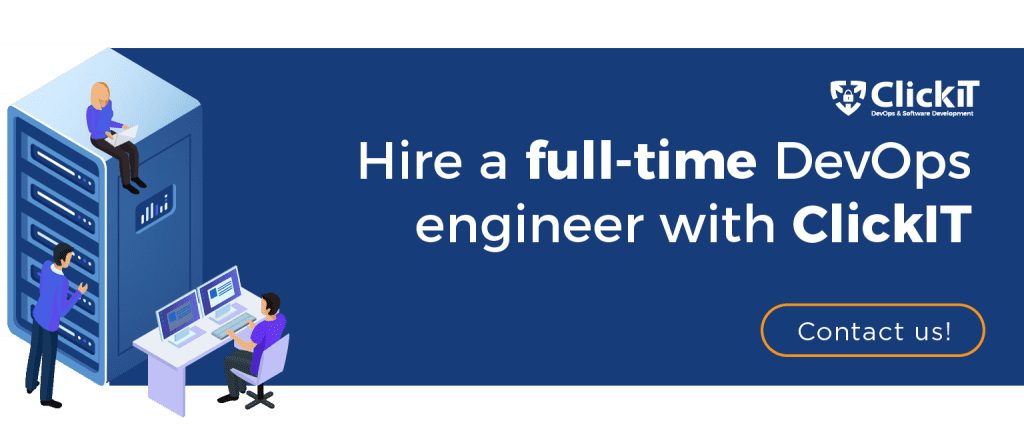
DevOps Team FAQs
In a DevOps environment, there is no hierarchy. Developers, operations, and QA teams work at the same level. As such, each team works independently and does not belong to any other team.
DevOps team builds a feedback loop with all stakeholders early in the cycle to establish seamless communication throughout the product lifecycle via product meetings, daily standups, planning meetings, etc, using various digital communication channels.
Before hiring a DevOps engineer, assess your business requirements and prepare a hiring strategy. A DevOps engineer is skilled in development and operations and interacts with all team members. So, look for complex skills such as IT background, virtualization expertise, system knowledge, etc., and soft skills such as communication, service orientation, team person, and the value he offers to the organization.
Firstly, for task management, set up a central task board using Kanban or Scrum so that everyone knows what is happening around them.
Secondly, collaboration is essential across the infrastructure so members can ask questions, share things, and keep everyone updated on the progress. Thirdly, establish an agile reporting toolset so that all stakeholders to monitor the project.
Choosing the right agile tools, educating stakeholders, assigning them specific roles, and collaborating with everyone using Kanban/Scrum boards is recommended.
The Ops team should bring extensible automation to operations so that regular tasks such as scaling the infrastructure, updating systems, or resolving issues can be done more smartly. It also brings consistency across the infrastructure and enables easy tracking of KPIs.
While the team operates autonomously most of the time, it will report to a pre-assigned senior member of the organization, ideally a DevOps evangelist, when required.
There is no one-size-fits-all size for a DevOps team, it depends on your organization’s scale and needs. What matters is having all critical skills represented.
Small companies might have a 3–5 person DevOps team where individuals wear multiple hats (e.g., one engineer handling both infrastructure and CI/CD).
Larger organizations might have dedicated roles (DevOps engineers, SREs, QA, security, etc.) spanning 10+ members. The focus should be on cross-functional collaboration rather than a specific headcount






